
Logge dei Tiratori della Lana
A striking medieval structure in Gubbio, once a hospital and later a wool guild's drying hall, showcasing pre-industrial architecture.
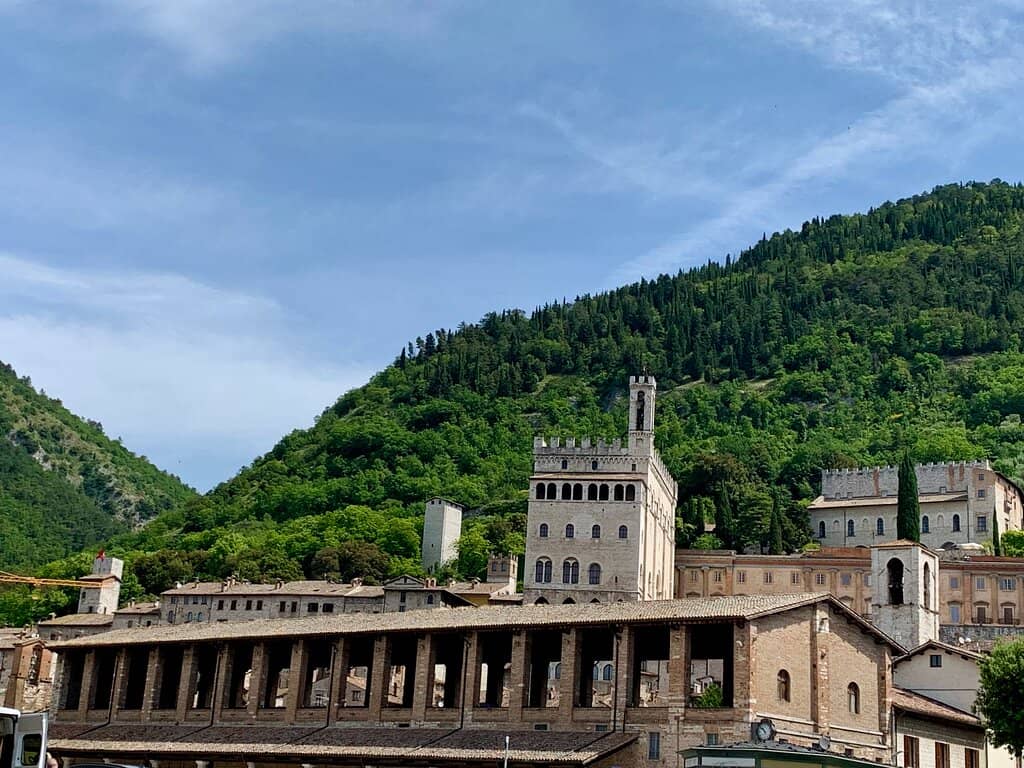
Highlights
Must-see attractions
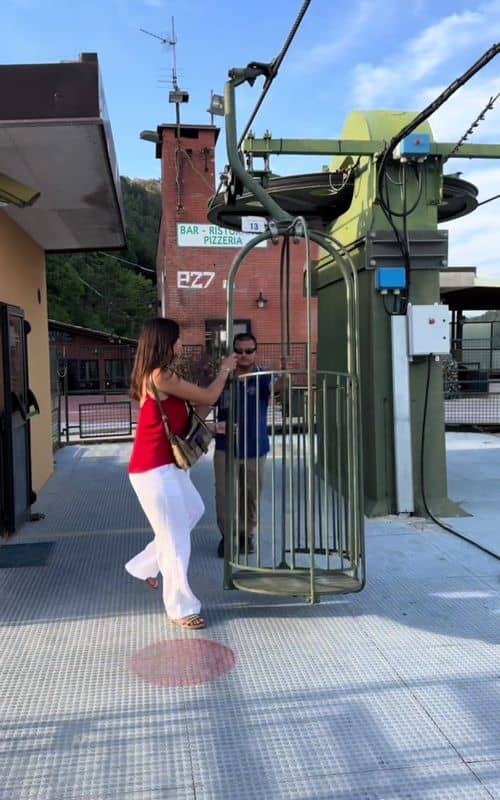
Social
From TikTok & Reddit
Best Time
Pleasant weather for exploring

Logge dei Tiratori della Lana
Best Time
Pleasant weather for exploring

Highlights
Must-see attractions
A striking medieval structure in Gubbio, once a hospital and later a wool guild's drying hall, showcasing pre-industrial architecture.
"This complex almost always makes a first impression on those who see Gubbio for the first time."
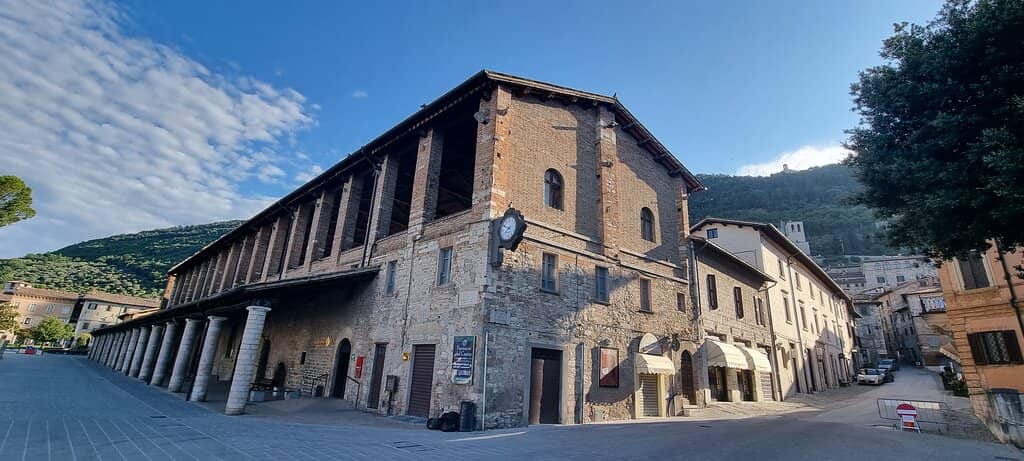
📸 Capture the Architecture
The long, porticoed facade is striking. Try different angles to showcase its scale and historical charm.
🚶♂️ Explore Piazza Quaranta Martiri
The square in front offers great views of the Logge. Check for any ongoing renovations that might affect access.
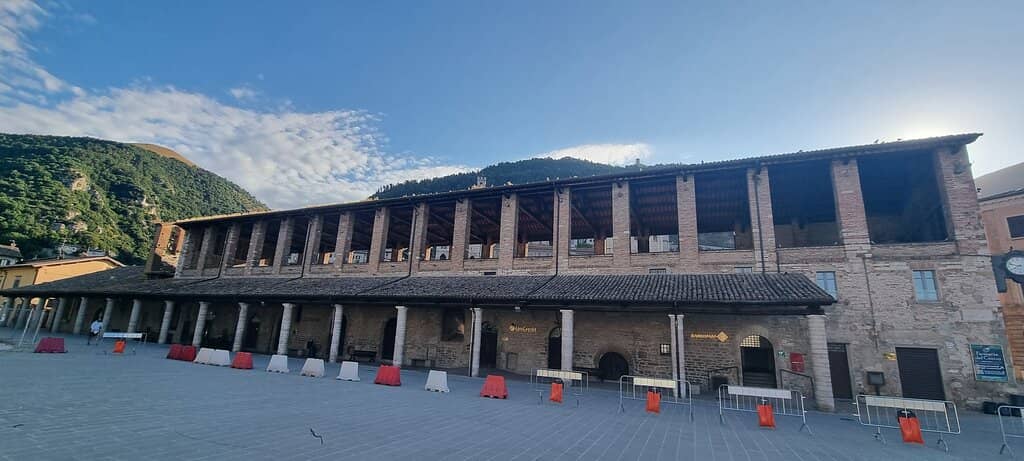
Highlights
Discover the most iconic attractions and experiences
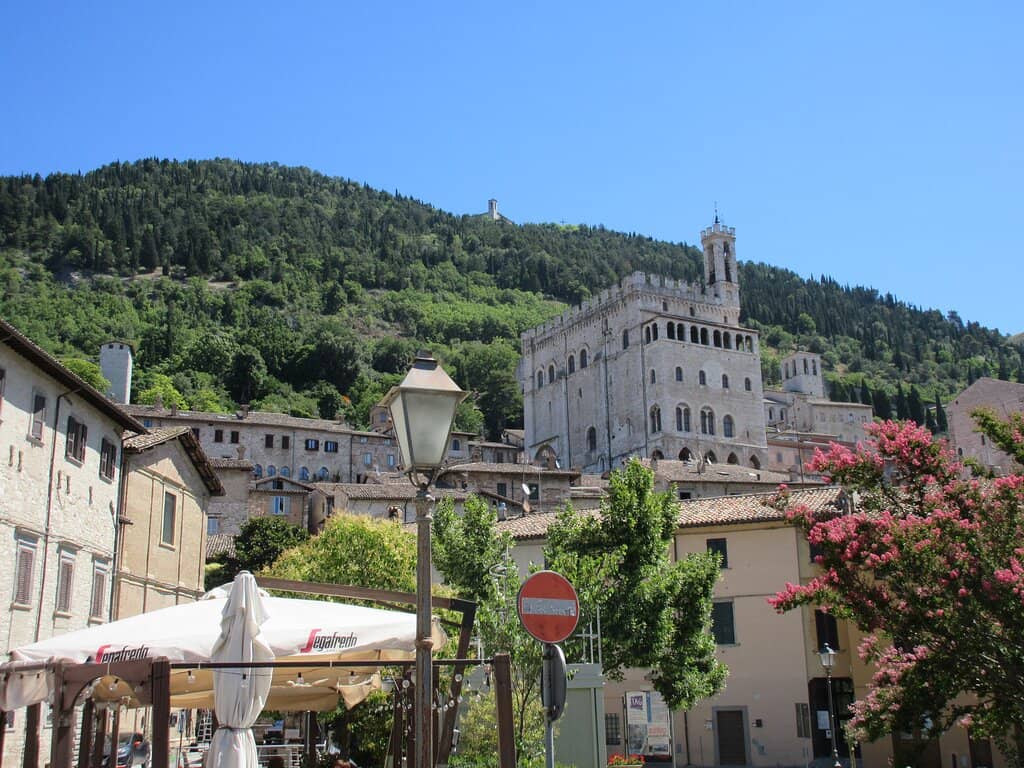
The Porticoed Facade
Piazza Quaranta Martiri
Admire the impressive long building with its distinctive portico, a rare example of pre-industrial architecture.
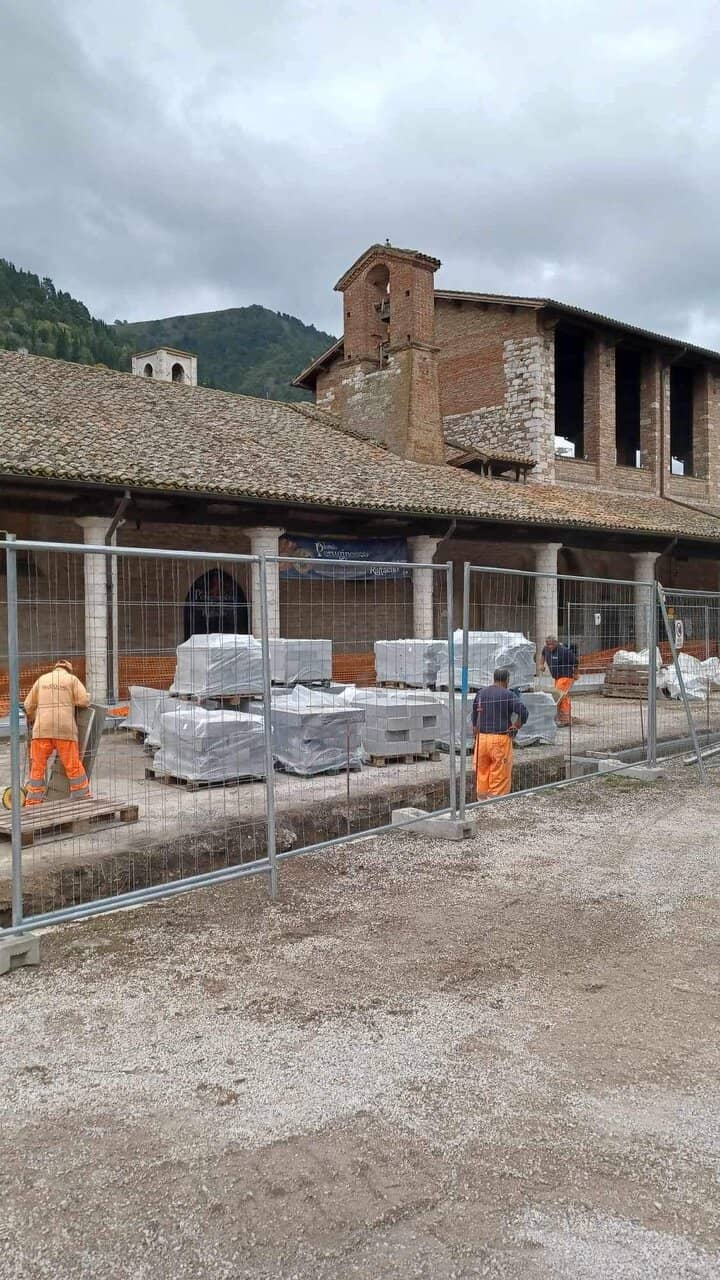
Fresco of the Madonna
Facade of the former hospital
Look for the 15th-century fresco depicting the Madonna with Saints Peter and Paul, a testament to the building's original purpose.
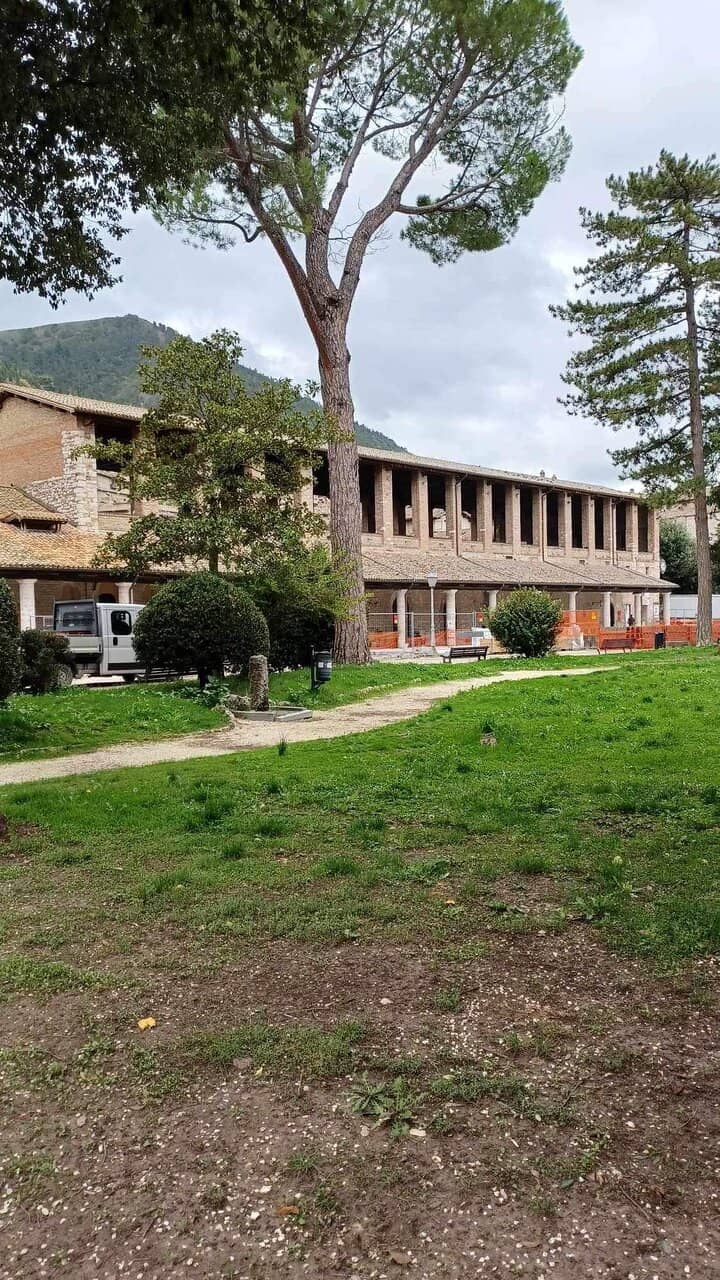
The Wool Guild's Drying Room
Upper section of the Logge
Imagine the process of stretching and drying wool fabrics in this specialized covered space, crucial for Gubbio's textile trade.
Plans like a pro.
Thinks like you
Planning Your Visit
Understand the Logge's Dual History
Check for Renovations
Best Times
Insider Tips
from TikTok, Instagram & Reddit
📸 Capture the Architecture
The long, porticoed facade is striking. Try different angles to showcase its scale and historical charm.
🚶♂️ Explore Piazza Quaranta Martiri
The square in front offers great views of the Logge. Check for any ongoing renovations that might affect access.
💡 Understand its History
This building was a hospital before becoming a wool guild's drying space. Knowing this adds depth to your visit.
Tips
from all over the internet
📸 Capture the Architecture
The long, porticoed facade is striking. Try different angles to showcase its scale and historical charm.
🚶♂️ Explore Piazza Quaranta Martiri
The square in front offers great views of the Logge. Check for any ongoing renovations that might affect access.
💡 Understand its History
This building was a hospital before becoming a wool guild's drying space. Knowing this adds depth to your visit.
What Travellers Say
Reviews Summary
Visitors are struck by the Logge dei Tiratori della Lana's imposing architecture and its fascinating dual history as a former hospital and a wool guild's drying facility. Its prominent location in Piazza Quaranta Martiri makes it a memorable first impression of Gubbio. Some note ongoing renovations in the square, which may affect the immediate surroundings.
"This complex almost always makes a first impression on those who see Gubbio for the first time. I've always wondered why it's built this way and what purpose it served, but its history answers my questions. It's particularly large, and the square in front of it is currently being renovated. A direct passageway to Gubbio was recently opened through a gate."
Cloude
"Located in Piazza Quaranta Martiri, the long building, equipped with a portico and bordered by the church of Santa Maria dei Laici, was originally the seat of the hospital of Santa Maria, built in 1326 on the initiative of the brotherhood of the same name. In 1505 other city hospitals joined it, the building thus took the name of "Spedal Grande" and remained active until 1628. On its facade there remains a fresco with the Madonna among the SS. Peter and Paul (1473) due to a pupil of Nelli. Already from the middle of the century. In the 15th century, the Wool Guild aimed to build, above the hospital, a covered room to "pull" clothes (i.e. to dry the fabric, stretched so that it took on a specific length and width). The shooting gallery was built, after countless controversies, only at the beginning of the century. XVII becoming one of the very rare examples of pre-industrial architecture.
The conference room below was recently restored and is currently used to host exhibitions."
Davide Pizzi
"…you enter Gubbio and you immediately see this long building with the portico!!…and with the Church of Santa Maria dei Laici!!…it is the Loggia dei Tiratori!!…but originally it was the Hospital of Santa Maria!!…with the increase in the wool trade…there was the need for a covered space…to stretch out the clothes!!…dry the fabric!!…spread it out so as to have the right width and length!!…and this is where the stretching room was built!!…when I passed by, major work was underway in front!!…perhaps definitely a restoration project to improve the area in front of the Logge dei Tiratori of Gubbio!!…"
Tiziana Botteri
What People Like
What People Dislike
Frequently Asked Questions
🚇 🗺️ Getting There
The Logge dei Tiratori della Lana is located in Piazza Quaranta Martiri, easily accessible on foot within Gubbio's historic center. If arriving by car, park in one of the designated parking areas outside the ZTL (limited traffic zone) and walk into the town.
Yes, there are several parking lots available around the perimeter of Gubbio's historic center. From there, it's a pleasant walk to Piazza Quaranta Martiri.
Gubbio is served by regional buses. Once you arrive in Gubbio, the Logge is a short walk from the main bus stops in the town center.
🎫 🎫 Tickets & Entry
The Logge dei Tiratori della Lana is an exterior architectural site and public space. There is no admission fee to view the building from the outside and walk through the portico.
As an exterior site, the Logge is accessible at all times. However, any exhibitions or events held within the former conference room would have specific operating hours.
No, there is no entrance fee to see the Logge dei Tiratori della Lana. It is a historical landmark that can be admired from the public square.
🎫 🏛️ Onsite Experience
The Logge has a unique dual history: it was originally the Hospital of Santa Maria (built 1326) and later housed the Wool Guild's covered space for stretching and drying fabrics, a rare example of pre-industrial architecture.
You can admire the long, porticoed facade, the fresco on the facade, and understand its historical function as both a hospital and a wool guild facility.
Yes, the Logge is located in Piazza Quaranta Martiri and is close to the Church of Santa Maria dei Laici. Gubbio's main attractions like Piazza Grande and the Palazzo dei Consoli are also within walking distance.
Absolutely! The Logge's distinctive architecture, especially the portico, makes for excellent photographic opportunities, particularly during golden hour.
The Festa dei Ceri is a very old and intense folk festival in Gubbio held on May 15th, known for its unique traditions and the 'in articulo mortis' blessing for participants.
For Different Travelers
Tailored advice for your travel style
👨👩👧 Families with Kids
Consider combining a visit to the Logge with a ride on the Funivia Colle Eletto (cable car) for panoramic views of Gubbio and the surrounding Umbrian landscape. This offers a more engaging experience for younger visitors and provides a different perspective on the town's layout.
🏛️ History Buffs
Researching the Wool Guild's importance in Gubbio's economy and the specific techniques used for fabric stretching will enrich the visit. The Logge stands as a rare surviving example of such specialized industrial architecture, making it a valuable site for understanding historical trade practices.
Deep Dives
In-depth insights and expert knowledge
The Dual Heritage: Hospital and Guild Hall
Later, with the growth of Gubbio's wool trade, the building's upper section was adapted to house the Wool Guild's specialized facility. This 'shooting gallery' or 'tiratoio' was a covered space designed to stretch and dry newly woven fabrics, ensuring they achieved the correct dimensions and quality. This adaptation makes the Logge a rare and significant example of pre-industrial architecture in Italy, showcasing the town's economic past.
Understanding this transition from a place of healing to a hub of textile production provides a deeper appreciation for the Logge's architectural features and its place in Gubbio's historical narrative. The conference room below has also been restored and is used for exhibitions, continuing its role as a community space.
Architectural Significance and Photography
Photographers will find the Logge a compelling subject. The repeating arches of the portico create a strong sense of rhythm and depth, perfect for capturing dramatic shots. The way the building interacts with the light throughout the day, especially during golden hour, can create stunning visual effects. Consider framing the Logge with the surrounding piazza or the Church of Santa Maria dei Laici for a more complete scene.
Don't miss the details, such as the fresco on the facade, which adds a touch of artistic heritage. While the primary view is from the piazza, exploring the accessible parts of the portico can offer different perspectives and a closer look at the stonework and historical markers.

Social
from TikTok, Instagram & Reddit